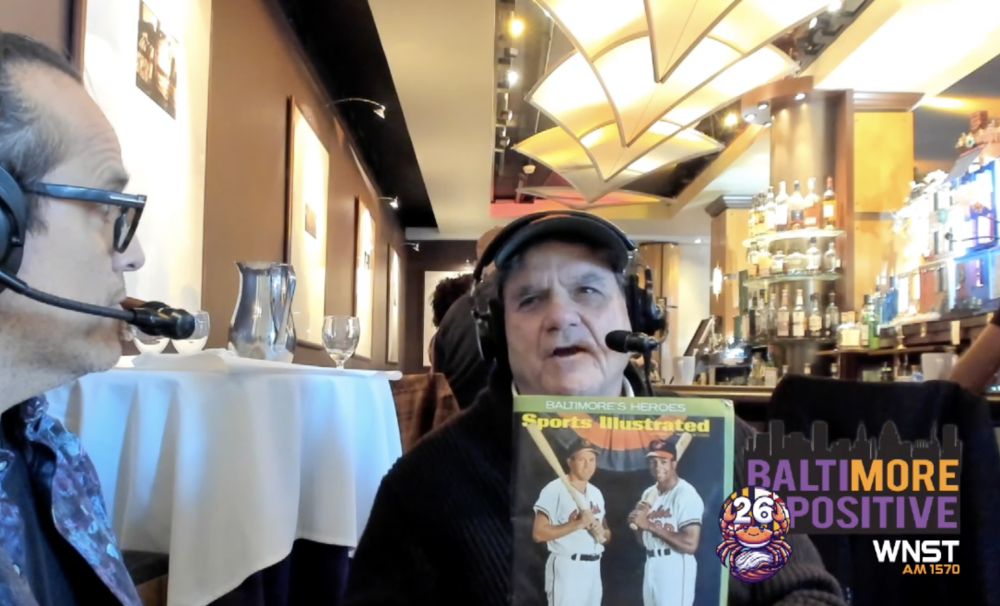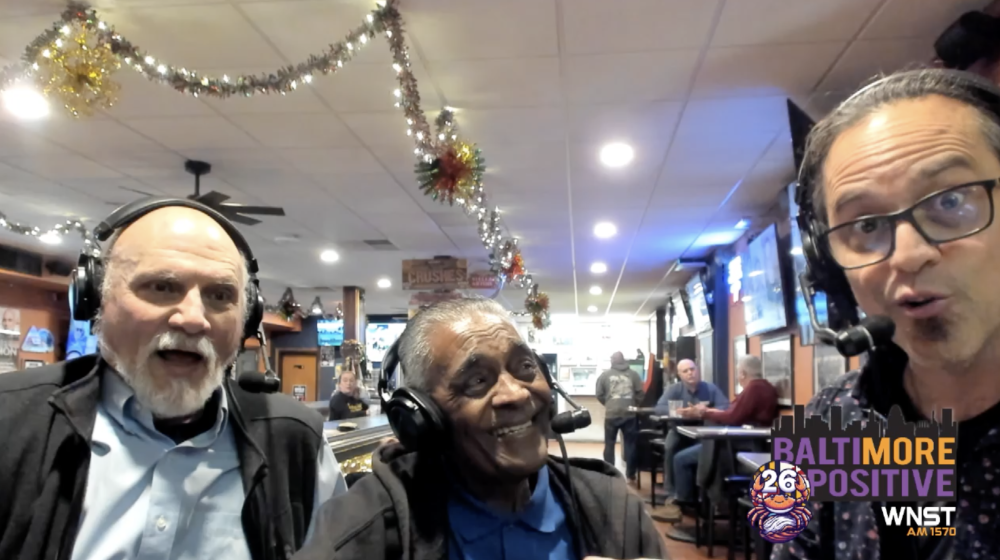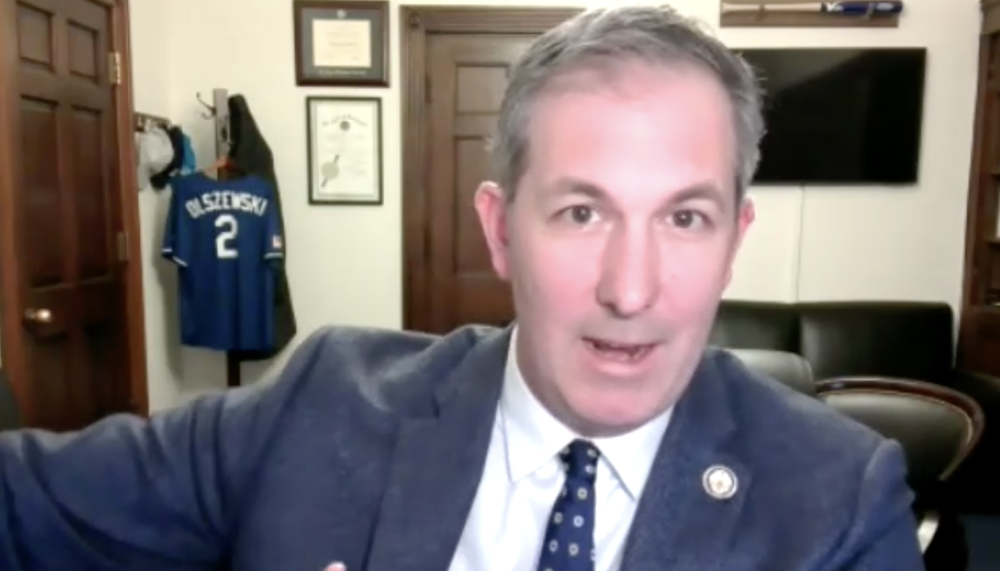Running back Jay Graham, taken in the third round, pitched in for a short time, once rushing for 154 yards vs. Philadelphia in a 10-10 tie at Memorial Stadium during his rookie year. Injuries limited his time with the Ravens. “He was a Tennessee boy who beat Alabama,” Savage quipped. “If you play for ‘Bama or are good enough to beat ‘Bama, you score extra points from this staff.”
The Ravens opted for a luxury pick with the fourth-rounder, tagging middle linebacker Tyrus McCloud from Louisville, who actually did a credible job filling in for Ray Lewis in his one opportunity when Lewis was injured in 1998. “He just never got the opportunity to play and I actually feel badly for him,” Savage said. “We were the wrong spot for him.”
It was late on the second day of the 1997 draft when Savage’s thorough preparation and the work his scouting team did really paid off for the Ravens.
Florida center Jeff Mitchell was selected with the fifth-round pick and, after suffering a brutal ACL injury the first week of his first training camp, came back to be a franchise center for the team, anchoring the Super Bowl XXXV front line. Iowa coach Kirk Ferentz, who served as the Ravens offensive line coach and assistant head coach for offense during the team’s first three years, was instrumental in selecting Mitchell, who had a long history of injuries at Gainesville. Ferentz, who was also responsible for bringing in starting Super Bowl right guard Mike Flynn from Maine, thought Mitchell would hold up long-term in the NFL and he was right. The pick, in retrospect, was nothing short of sensational.
In the final two rounds, the team landed linebacker Cornell Brown, defensive end Chris Ward, quarterback Wally Richardson, safety Ralph Staten and defensive tackle Leland Taylor.
Brown, from Virginia Tech, and Staten, from beloved Alabama, were major contributors to the team from the beginning. Both had character issues in college but were minimal risk guys in the late rounds. Brown, specifically, managed to stick as a versatile insurance policy for both Sharper and Boulware during the Super Bowl season. He was also an attack man on special teams and seemed to fly to the ball with great instinct. Other than a small driving license issue at Blacksburg two years into his NFL career, he kept his nose clean and was extremely well-liked by his teammates.

Staten, despite an immense amount of physical ability, was the first into Brian Billick’s doghouse upon his arrival in early 1999 and found himself unemployed almost immediately.
Not all of the Ravens’ drafts were as happy and productive as 1997, though.
In addition to missing out on the third overall pick in the 1998 draft by not pulling the trigger with San Diego the year before, the Ravens’ chance at success was much more limited long before draft day. They had swapped a myriad of picks with Indianapolis in acquiring quarterback Jim Harbaugh, who Marchibroda felt still had some fire left. Harbaugh was probably the single nicest Raven in the history of the franchise, but an arm injury hampered his already limited ability to throw the deep ball. Being a wonderful human being didn’t get the ball downfield, and the team struggled mightily with him at the helm. The other off-season addition, running back Errict Rhett, cost them a third-round pick to Tampa Bay.

Without third- and fourth-round picks, and only seven picks total that day, Savage and his scouting staff had extra pressure to alleviate the franchise’s slow start in Baltimore. They were sitting on picks Nos. 10 and 42. After those picks, they wouldn’t draft again until Sunday.
It was obvious that the team’s secondary was in massive need of help, especially with the departure of cornerback Antonio Langham in free agency to San Francisco. Langham, who was an original lottery pick of the Browns before the move in 1994, was a massive bust for the Niners, and the Ravens never regretted losing him and had done little to keep him that winter. Fresh blood would be on the way in April, somehow, someway.
The story begins in December 1997 as the Ravens were preparing for the draft. Savage, always keeping Newsome abreast of what he sees during his many days on the road, informed the boss of a “little shit” playing cornerback at Miami. “I’ve got a pretty good player for you,” Savage told Newsome. After viewing the tape of the 5-10, 170-pound Duane Starks, Newsome called him “a midget, but an exciting ballplayer.”
At the time, John Wooten had joined the Ravens as a special scouting assistant, and along with James “Shack” Harris, the braintrust of the draft and of player personnel had grown by two. Wooten and Harris both viewed tape of Starks, and despite his size, liked what they saw. Sheer determination. Hard hits. No missed tackles. A little guy who played the run on the corner. A guy with make-up speed. Basically, everything you’d want from a cornerback except two-inch lifts for his sneakers.
By March, the ball started rolling throughout the scouting staff on “the midget” from Miami with the gold tooth.
Savage, who liked Starks as a prospect but was never serious about using a high first-round pick – specifically a No. 10 – on him, had created a monster. And it was uncontrollable.
With a veteran quarterback in Harbaugh and a veteran running back in Rhett, the team had two glaring needs: a cornerback and a wide receiver, but not necessarily in that order. Veteran wide receiver Derrick Alexander, the Browns’ first-round pick of 1995, had left in February for Kansas City via free agency.
There were only two serious candidates at the wideout position: Kevin Dyson from Utah and Randy Moss from Marshall. Dyson just wasn’t good enough to select with the 10. Moss was almost unilaterally eliminated for all of the character issues that followed him. (By now, the failed Lawrence Phillips experiment in St. Louis was on full display for the nation, and 1996-97 Ravens lead running back Bam Morris was headed for jail in Texas). Moss was a risk the Ravens just couldn’t afford to take, no matter what the upside. They wouldn’t have even considered him with the 42. He was off the board, like he didn’t even exist. He would be someone else’s problem or diamond in the rough.
The Ravens were enamored with Starks, but not necessarily at the No. 10. The only other defensive back the team liked was Vanderbilt’s Corey Chavous, who eventually fell out of the first round to Arizona at No. 33. Defensive coordinator Marvin Lewis had spent plenty of time getting to know Chavous during the draft process and thought he was one of the brightest intellects he had seen coming out of college in a long time. “It was like I was talking to a coach all day,” Lewis said. “He really had an unbelievable mind for the game. He really understood everything that was going on.” Chavous’ lack of speed would eventually be a determining factor on Draft Day. He was good, but not good enough to make an immediate impact.
On Draft Day, April 18, 1998, the board went almost as planned, except for Mike Ditka’s Saints reaching up to take tackle Kyle Turley nearly a round earlier than anyone expected at No. 7. Florida State tackle Tra Thomas was universally considered the top prospect at his position and was still on the board when Jacksonville selected at No. 9, using Buffalo’s pick that they acquired in dealing quarterback Rob Johnson. With Boselli in the fold in the swamp and Ogden in Baltimore, Philadelphia began salivating at the notion of getting Thomas at No. 11.
The cat and mouse game began in earnest.
The Eagles were waiting for someone to slip into one of the two spots and nail Thomas, who most folks had going in the top eight. As Jacksonville turned in the name of Florida running back Fred Taylor in New York, the Eagles were percolating the rumor mill, telling anyone who would listen that they were taking Starks at No. 11. Wooten, a former personnel man in Philadelphia, advised Newsome to take them seriously.



























